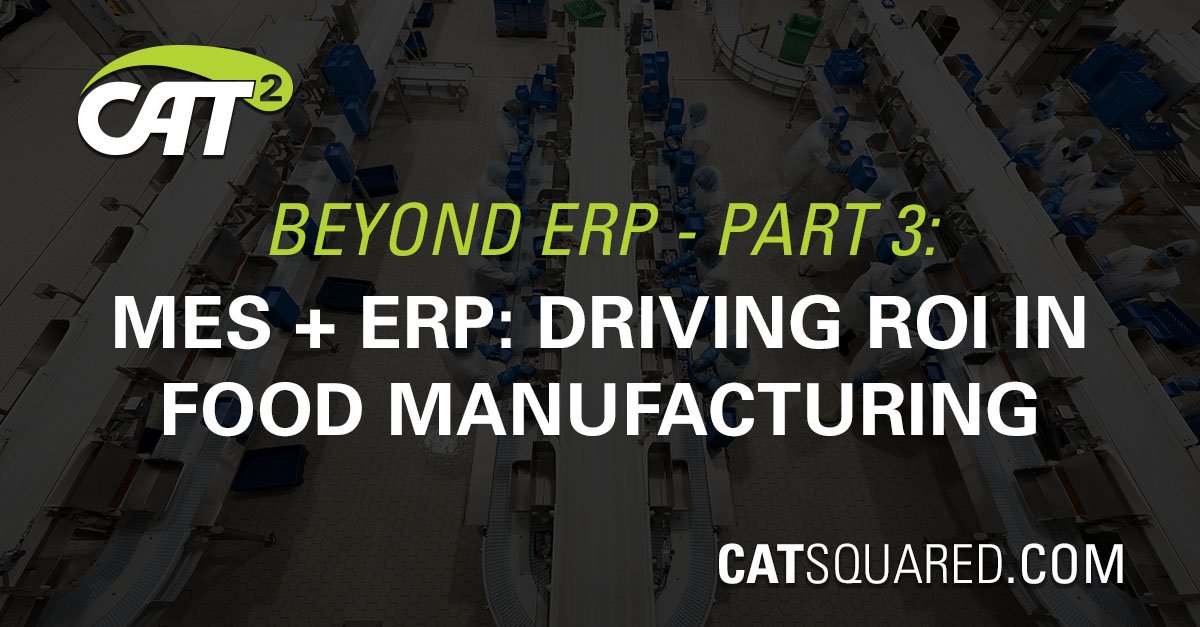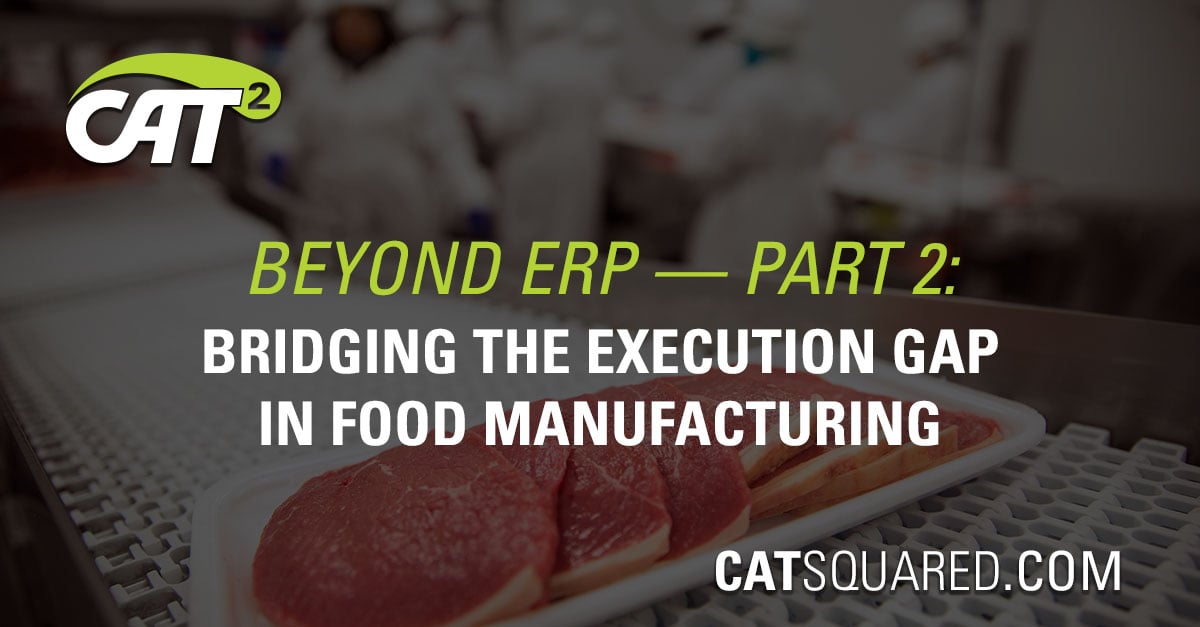Previously in our Beyond ERP series, we saw how an MES complements an ERP by managing plant-floor operations in detail. But what does this mean for your bottom line and overall performance? In this final part of our series, we focus on the business benefits of combining ERP with a Manufacturing Execution System – specifically, how this “execution layer” drives end-to-end traceability, enables ongoing continuous improvement, and ultimately delivers a compelling Return on Investment (ROI). We’ll also share real-world examples demonstrating the value of MES software for food manufacturing.
Farm-to-Fork Traceability with MES
Food safety and traceability are paramount in meat and poultry operations. When an issue arises – say a contamination scare or a bad batch of ingredients – companies need to pinpoint affected products quickly. An MES integrated with ERP ensures that every step of the production process is recorded and traceable, from each lot of raw material to each finished good case. CAT Squared emphasizes “farm-to-fork traceability” as a core capability of its MES. All ingredients and outputs are lot-tracked via serial number, and the MES links those to production runs, equipment used, and even specific suppliers or farms.
The benefit is dramatically faster and more precise recall management. For example, Rose Acre Farms, a large egg producer, reported how their traceability improved after implementing CAT Squared’s MES.
“Before implementing CAT Squared, a mock recall took between two-and-a-half to three hours to complete. Now, we can do a material audit in a little less than one hour and a product audit in less than 15 minutes.” ~ Brian Tormoehlen, Inventory Control Systems Manager, Rose Acre Farms.
What used to occupy a team for half a day now takes minutes – a stunning improvement in responsiveness. In a real recall situation, that speed could mean the difference between a contained issue and a nationwide problem. By having the MES track all relevant data and share it with the ERP, manufacturers mitigate risk, protect their brand, and ensure compliance with regulatory requirements (like USDA or FDA record-keeping rules). Traceability isn’t just about avoiding worst-case scenarios, either; it also builds consumer trust. In an age where end-consumers and retailers care about where their food comes from, having detailed genealogy data for products (which an MES can feed into consumer-facing traceability portals) becomes a competitive advantage.
Real-Time Data Enables Continuous Improvement
One of the perhaps under-appreciated benefits of an MES is the rich stream of real-time data it provides. With every weigh-in, every downtime event, and every quality check logged, you now have a trove of information to analyze and improve upon. Many food companies embark on continuous improvement (CI) or lean manufacturing initiatives to boost efficiency and reduce waste. An MES is the engine that powers these initiatives by providing accurate, timely KPIs from the production floor.
CAT Squared’s philosophy is centered on this idea of using data for CI. Their system “drives continuous improvement with real-time process visibility,” displaying metrics on executive dashboards and plant-floor scoreboards for instant feedback. For instance, if you see via the MES that a certain production line consistently falls short of yield targets (perhaps due to higher trim loss), you can investigate and address it – maybe through better training or equipment adjustments – and then watch in the MES data how the yield improves. Similarly, MES captures downtime reasons, so you can identify the top causes of unplanned stoppages and systematically work to reduce them, thereby increasing OEE (Overall Equipment Effectiveness).
Because the MES is integrated with the ERP, improvements on the floor translate into better financial outcomes in the ERP’s reports as well. Reduced giveaway (through monitoring and controlling case weights to limit overpacking) means lower cost-of-goods and improved margins in your financial system. Less downtime and more throughput mean more orders fulfilled on time, boosting revenue and customer satisfaction (which the ERP’s order module will reflect in on-time delivery metrics).
Data to Dollars: A study by MESA International found that companies implementing MES saw significant performance gains – for example, 22.5% improvement in total cost per unit and a 19.4% increase in net profit margins on average. These gains come from exactly the kind of waste reductions and efficiency improvements we’re discussing. By providing the granular data needed to pinpoint improvement opportunities, MES becomes a catalyst for profit growth.
Case Studies: Real MES ROI in Meat & Poultry
It’s one thing to talk about benefits in theory; it’s another to see them in practice. Many leading meat, poultry, and seafood processors have adopted MES solutions (like CAT Squared) alongside their ERPs, and they are reporting impressive results:
- Cargill Protein (China) – After a comprehensive CAT Squared MES implementation, the team identified key value drivers through process mapping. As a result, Cargill Protein’s China division expects savings exceeding $1 million per year. That’s direct ROI, attributed to improvements like yield increase, better inventory accuracy, and labor efficiency gained by using the MES.
- Gedik Piliç – One of Turkey’s largest poultry producers, Gedik Piliç implemented CAT Squared’s MES to gain better control over disassembly, yield, and quality. After go-live, the company reported significant improvements in operational visibility and responsiveness. Real-time production data empowered floor managers to address losses as they occurred, reducing giveaway and increasing daily throughput, without additional labor. Within months, Gedik was already seeing measurable ROI.
- Turkey Valley Farms – A poultry processor whose IT Director provided an especially ringing endorsement of CAT Squared’s MES: “CAT Squared is the best MES system for the food industry. I’ve used CAT Squared in our production plant for years, and there is nothing else on the market that is better aligned with our food production processes.”
How ERP + MES Integration Creates Business Value
Why do we say MES + ERP = ROI? Because the integration of the two creates a whole greater than the sum of its parts. The ERP brings its enterprise-wide oversight and scalability; the MES brings depth and execution excellence on the plant floor. Together, they ensure traceability, efficiency, and insight at every level. Here are a few concrete ways this integration drives ROI:
- Elimination of Data Silos & Errors: With MES feeding data to ERP, there’s no need for manual data entry or spreadsheets to bridge gaps. This reduces human error (avoiding costly mistakes from mistyped entries) and frees up staff time that was previously spent reconciling data.
- Faster Decision-Making: An integrated MES/ERP setup gives managers real-time visibility. You can see current production status, inventory levels, and quality metrics live. Faster, data-driven decisions (such as adjusting production schedules on the fly due to yield issues or quality holds) prevent minor issues from becoming major costs. As CAT Squared notes, this connectivity “eliminates data silos and supports smarter, faster decision-making.”
- Better Customer Service and Sales: Fulfilling orders on time and with the right quality builds trust with customers. By improving on-time delivery (which, as mentioned, MES implementations have been shown to do by ~22% on average) and ensuring quality through traceability, companies can win more business and avoid the revenue loss that comes with recalls or stock-outs.
- Employee Empowerment and Accountability: Operators and plant supervisors using MES have clear targets and immediate feedback. This tends to boost engagement – the team sees their progress on screens and knows when they hit their goals for the shift. A culture of accountability and continuous improvement takes root, which in turn drives productivity (a virtuous cycle contributing to ROI).
From Traceability to Profit: MES in Action
Whether you’re disassembling whole birds into cuts, mixing spices into sausage, or managing egg inventory, an MES integrated with your ERP is the proven way to attain both control and agility. You get full traceability, improved yields, and data-driven continuous improvement, all translating into real financial returns. The ERP-MES partnership lets each system play to its strengths: ERP plans and records, MES executes and analyzes.
Food manufacturers who recognize this symbiosis are reaping the rewards. They’re not abandoning ERP – they’re augmenting it with the right tool for the job on the plant floor. The result is a smart-factory ecosystem where information flows seamlessly from the shop floor to the top floor (and back), driving better decisions at every level.
The Bottom Line: MES Is the ROI Engine ERP Needs
As we’ve seen from the examples of industry leaders, the investment in an MES pays off in traceability assurance, operational efficiencies, and bottom-line savings. In an industry facing razor-thin margins and rigorous safety standards, those benefits are game-changers.
Curious how an MES could take your ERP — and your plant operations — to the next level?
Let’s talk. The team at CAT Squared has helped food manufacturers across the industry boost traceability, streamline operations, and turn real-time data into real results. We’d love to show you what’s possible for your business.
Reach out for a quick demo — and let’s start building a smarter, more connected plant.
Read the complete Beyond ERP Series:






